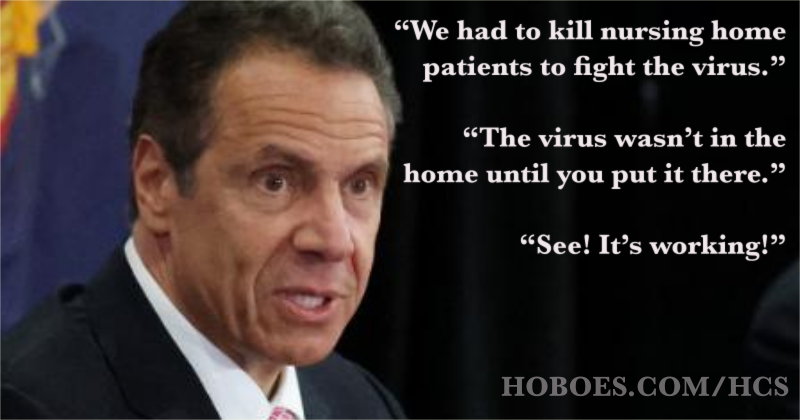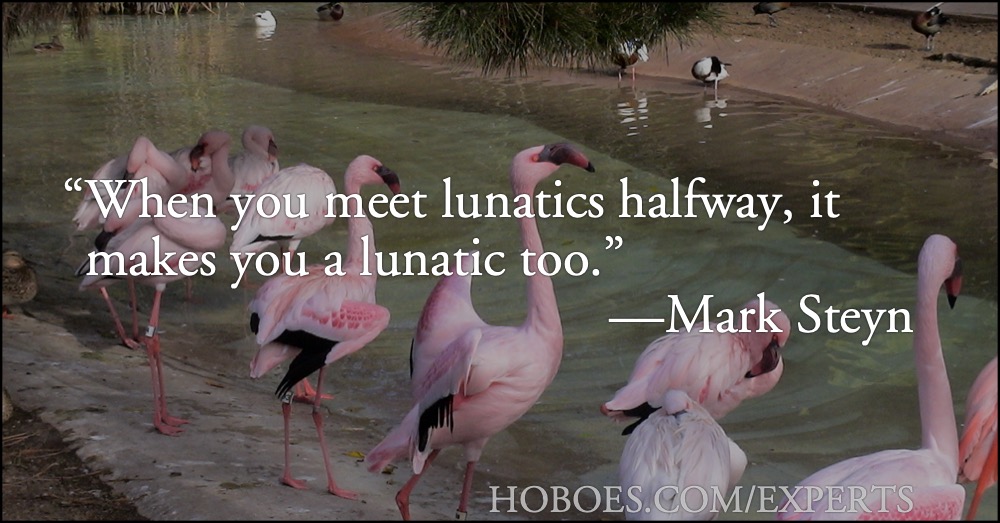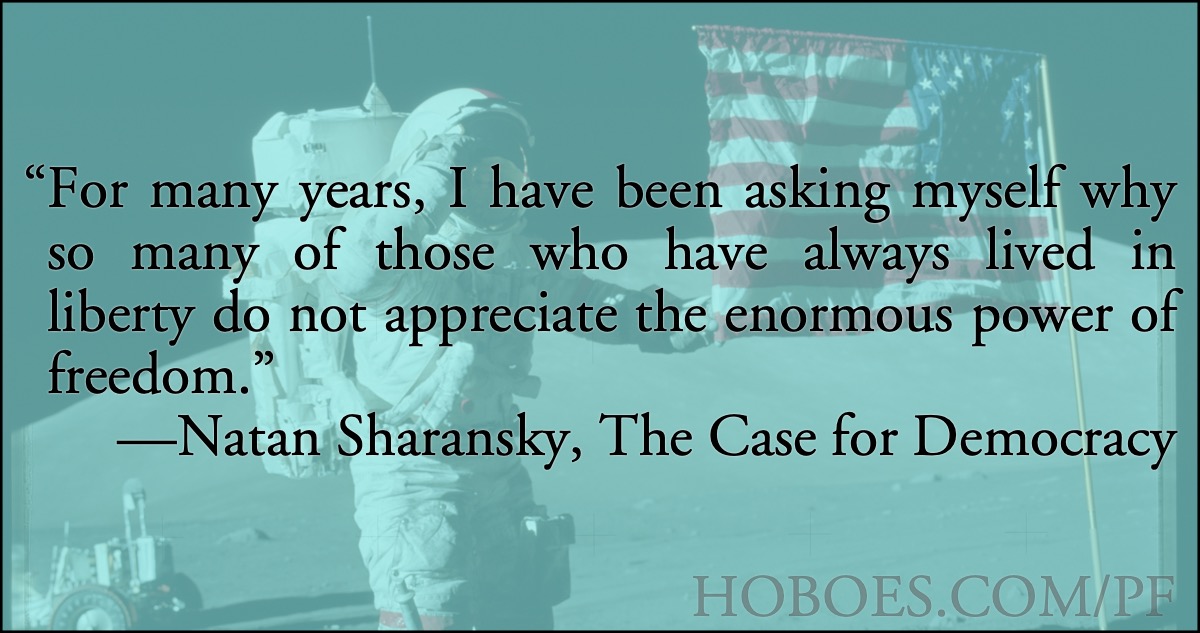COVID Lessons: The Health Care Shutdown
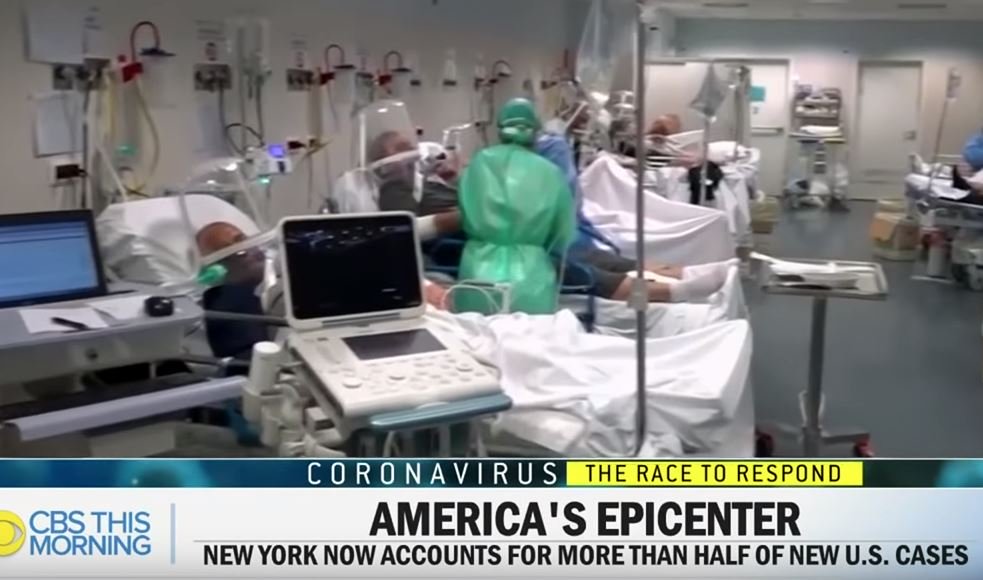
This is not a New York City hospital; it’s footage aired nearly a month earlier from Italy.
Milton Friedman apocryphally said that if we put the government in charge of a desert, we’d end up with a shortage of sand. Now, we see that in Michigan Governor Whitmer’s takeover of medical care—in the name of increasing hospital beds—is instead causing a shortage of hospitals. Whitmer, like many governors, shut down “elective surgeries”. Elective is a very dangerous misnomer—it doesn’t mean what it sounds like.
An elective surgery does not always mean it is optional. It simply means that the surgery can be scheduled in advance. It may be a surgery you choose to have for a better quality of life, but not for a life-threatening condition. But in some cases it may be for a serious condition such as cancer.
But shutting down elective surgeries, even the non-serious ones, also had another side effect: hospitals didn’t have enough work, and ended up laying off employees. In other words, government actions meant to increase the ability of hospitals to respond to the crisis worsened the ability of hospitals to respond.
The more evidence I see from COVID-19 studies, the more likely it becomes that this particular panic will go down in history as yet another example of the madness of crowds rather than a reasoned response to an epidemic. The fatality rate was never near the rate we thought it was when we were only testing people at risk of dying. It was a classic self-selection bias. The only places that approximated those predictions were in states where governors forced nursing homes to house the sick with the healthy. The only explanation for such behavior is madness.
But there will be a truly universal epidemic at some point, and it’s probably better that we failed badly on a COVID-19 than on a Spanish Flu. Despite all the people we killed by closing down hospitals and doctors and dentists, and all the lives destroyed by closing down people’s life’s work, the destruction would have been even worse if COVID-19 had been as bad as the experts said it was going to be. If we respond this way to a truly excessive disease, the death toll will be unimaginable.
For just one example, if the virus had been as bad as the experts said it was, New York, New Jersey, Michigan, and Pennsylvania’s decisions to force nursing homes to take in COVID-19 patients wouldn’t just have killed thousands in those homes; it would have killed everyone in those homes.
And if a second crisis had hit during this shutdown? We would have been completely unprepared, completely unable to resist. We shut down our resistance.
The most telling, and frightening, response was the Mongols and the Turnips in all its forms. In a real epidemic, we must be able to both fight the virus and harvest the turnips. If we stop creating, if we stop growing food and making vehicles and generating medicine and clothing and all the necessities of life, we cannot fight the virus. Further, we reduce our ability to fight the next virus, or the next hurricane, earthquake, or other crisis. It seems crazy to even have to make the point—even in our panic, we considered six feet of separation enough to “fight the Mongol”, which meant that most jobs didn’t need to be lost, people didn’t need to forgo healthcare, and most businesses didn’t need to be abandoned. Most businesses could have stayed open with six feet of separation. Most jobs could have been kept with six feet of separation.
The most dangerous reaction to COVID-19 was a murderous spiral where governors outdid each other isolating the citizens of their states, and individuals outdid each other justifying the completely unhinged reaction of shutting down what didn’t need to be shut down even under the logic of the time. The overreaction in some of our states was phenomenally deadly, and would have been far worse if the disease had been as deadly as originally claimed, or if some other crisis had happened during this one. Imagine shutting down food and medical production, distribution, and services and also having a deadly hurricane. Imagine if a deadly disease that didn’t look like COVID-19 had started spreading—while we were telling everyone to ignore symptoms that didn’t look like COVID-19.
We shut down the incredible workers, the drivers of the great engine of innovation that could have best and fastest defeated the virus, and instead waited on a handful of experts who were already wrong and who we knew were wrong.
The fearmongers are going to use the elephant whistle analogy. You know the old joke:
“Why do you keep blowing that whistle?”
“It scares away wild elephants.”
“This is the United States! There are no wild elephants here.”
“See? It’s working!”
In this case, the total lockdown is the whistle. Their models said that if we went to a lockdown, we’d still see a massive number of deaths. Those deaths never (thank God) materialized. And their response? “See? It’s working!”
I’m very happy that their models were wrong and fewer people died. I’m not sure the media is. But regardless, the models were wrong. The elephant whistle is not what drove the elephants away.
By this time next year, the anointed will be seeing elephants everywhere, comparing every flu and cold to COVID-19. We’ll be told that we need to shut down roads to combat highway deaths—it’s another COVID-19 every day! Fast food is killing people. We need to shut down every vendor of fast food, soft drinks, and candy until we can combat their deadly addictions! Everywhere they see something they want to shut down, they’ll call it the new COVID-19.
Whenever the left wants to devalue someone’s life, they call it economics, and they’ll be doing it more now that they’ve seen it work so spectacularly.
Every time people started calling for being able to go see their doctors again, called for being able to build again, called for being able to feed people again, the left accused them of just wanting to go out to restaurants or clubs.
In a crisis we need to be clear about our goal—and remain clear. There is always a strong tendency to turn the process into the goal. Our goal was, flatten the curve so that we don’t overwhelm hospitals. Our process was a combination of shelter-in-place and physical distancing. Somewhere along the line, a lot of people forgot that the process was just a means to an end. And for some people, the end they claimed they wanted was always just an excuse to justify the means they really wanted.
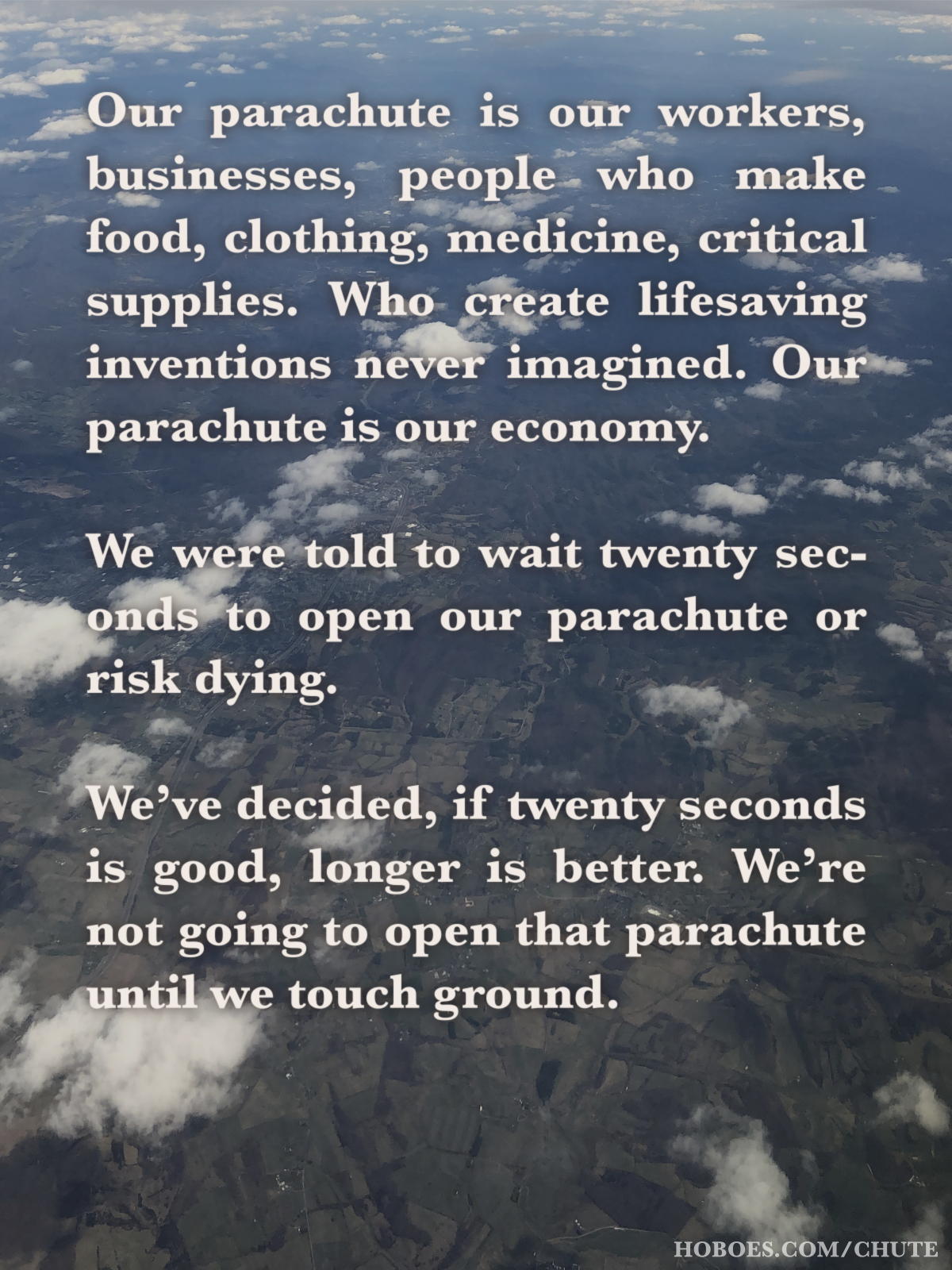
We started the shutdown because we were told we needed to preserve our parachute until the appropriate time to open it. Then we started pretending that the fall was the parachute. That’s as deadly as the analogy makes it seem. As the curve flattened, we suddenly saw people screaming, literally, that we shouldn’t open the parachute yet, we need to wait until we land. They made the process—the lockdown—into the goal. But that process was always a deadly tradeoff. It meant trading COVID-19 deaths for non-COVID-19 deaths; it meant trading lives for lives, which is why it was always meant to be merely temporary.
This is especially true when it came to the health care shutdown. Many states shut down non-essential health care. But most non-essential health care is only non-essential in the short term, and barely even then. All of the preventive care, from routine dental care to regular checkups to vaccinations to physical and mental therapy, all of it saves lives. And cutting it off or slowing it down takes lives.
People put up with it for a while. But after a month passed and governors started talking about shutting down for several more months, I started hearing from friends who were seriously in fear for their lives. Not because of COVID-19, but because of the shutdown.
Unlike some of the bot-driven fake nurse memes, or the overseas, government-run hospital chaos photos that the media tried to pass off as American hospitals because they couldn’t find any chaos in the United States, these are real people and real stories. I’ve met them all and talked to some.
- [We have] a friend whose wife needs an organ transplant. She has a donor—her daughter. She NEEDS this. Yet, they won’t do it now. It was scheduled because she needs it, and she was sent home. At some point it will be too late. This is in Michigan.
- She has a WEIRD eyeglass prescription. Not a bizarre one, but she can’t get glasses off the shelf. And, she can’t drive without them and she’s the only person in her household that CAN drive. So, if her glasses break (has two spares, but she also has cats and a family member with a nerve disorder that causes flailing), $50 minimum taxi ride at best. Optometrist is closed. Not a critical need, so she’s waiting. If her eyes change (she’s on the far end of her cycle, but not THAT far) or she loses what she has, $50 minimum ride for groceries and she lives just far enough outside of most place’s delivery areas.That $50 is about two days and some change of groceries.
- “So here’s the thing—I have cancer. At least, my doctor believes I have cancer, but we can’t know for sure until the lump is removed from my breast and we get the test results back. That can’t happen for as long as this lockdown continues because the governor has decided that, in spite of what I or my doctor thinks, I don’t need that surgery right now. I’m not alone in my situation. There are literally hundreds of thousands of people who are blocked from access to the care that we need. Please PLEASE STOP behaving as if the only reason people want this to end is so that we can hang out with our friends and go get our hair done. Most of us are worried about our health, our jobs, and our families who depend on us being able to do what we need to do every day. No one is forcing anyone to break your self quarantine. We just want freedom to do what we need to do before our lives are destroyed.”
- When our state started loosening restrictions, the facility started letting the residents out into the common areas and have limited visitors. On one of these visits with my aunt, Grandma started ranting and yelling about Grandpa having an affair and demanded my aunt bring her a gun so she could shoot them both. I guess it was pretty scary, because Grandma NEVER yells like that…. Since I got off the phone with Mom, I’ve been trying to find out the effects of isolation on people with dementia, especially ones who are in the earliest stages. The articles I’ve been able to find have indicated that it certainly doesn’t help matters when someone with dementia is shut inside without human contact for prolonged periods of time… I’m pissed as hell, but I can’t do a damn thing about it. And I’m tired of all the sanctimonious Karens throwing around “you just want to kill Grandma!” when the topic of ending lockdown comes up. Right now, I don’t think those measures to protect our elderly really protected my Grandma.
- …yes, the isolation and lack of normalcy is very likely making things worse. I am seeing it constantly in patients. Every facility I go into, dementia units are madhouses. Even healthy people are declining hard because they have nothing to hold onto. It’s pretty terrible, and I couldn’t agree more about the horror of the situation. On one hand, these patients are really vulnerable. On the other, we’re placing potential quantity of life ahead of quality of life, and we’re doing it without giving the residents a choice.
We could have focused on the people who needed it—the elderly, and others more vulnerable. Instead, we spread our response to everyone, spreading it so thin that we not only didn’t help the vulnerable, we killed them. Some of the frighteningly counterproductive orders, in New York and New Jersey, in Michigan, and in Pennsylvania, forced nursing homes to accept COVID-19 patients. Unsurprisingly, the greatest numbers of deaths happened in these states, and at these homes.
A general lockdown instead of a focused response killed them. We’re only seeing the tip of the iceberg on how many people this lockdown has killed and is killing. It is difficult to protect the vulnerable during a crisis. It is impossible if we spread our response around to everyone instead of focusing on those who need it.
But think again what we supposedly knew about COVID-19. What made it dangerous was its interaction with various co-morbidities. Treatment for co-morbidities were classified as non-essential health care by many states that limited health care access. In the name of making the virus less deadly, we made it more deadly. Our next response must not shut down the greatest weapon we have against a crisis, especially our health care system.
We have to maintain our ability to meet the next crisis, even during a current crisis.
Our “shortage of sand” well predated this crisis. Why did we need a temporary shutdown to get hospitals ready? Why were hospitals not already prepared for the crisis? Because many state governments literally force hospitals not to prepare for emergencies. In states like Michigan, due to “certificate of need” laws, hospitals cannot add more beds without permission from their competition. When someone wants to open a new hospital, open more beds, or buy more equipment, they must go before a board of their competitors to get permission. They need an acknowledgement from their competitors that those added beds or new equipment are needed, or they can’t install them. Imagine if your local Safeway could forbid not just a Ralph’s or a Meijers from moving in to the community, but could even forbid neighborhood grocers from expanding their food aisles. That’s what certificate of need does for health care: drives up prices, drives down availability, and discourages planning for emergencies.
Certificate of need laws have to go. They literally limit hospital capacity and health care capacity to what we needed yesterday, forbidding building up for what we might need tomorrow.
And socialized health care should be off the table. Looking at what happened in other countries, having to refuse ventilators and hospital space to people who needed them because the government system already relied on rationing rather than building. That’s our future if we put government agencies even more in charge of hospitals and medical supplies. The media had to go to government-run hospitals overseas to get the video of hospital overload that they wanted to scare us with, pretending that they were domestic.
If the left has their way, the media will be able to find all the chaos they need right here at home.
Of the five deadliest outbreaks at a nursing home, three of them were in government-run nursing homes. That doesn’t sound like a big deal—it’s only 60%, after all—until you realize that only 7% of nursing homes are government-run. Why did it happen? The same reason it always happens in government-run health care, from the VA to the NHS to Canada: bureaucrats lied. There is no accountability when government bureaucrats lie.
State officials had apparently lied about staff not coming down with the virus, workers were told not to wear protective equipment, and the Paramus facility wasn’t following CDC disinfection guidelines. At Menlo Park, the family of a Vietnam veteran complained that he was wrongly placed with coronavirus patients leading to his death, and family members of other deceased residents reported facility failures.
We have to stop trying to run health care at the government level. Remember Bernie Sanders’s complaint about how much choice we have in supermarkets, how abundant our options are? As it turns out, we didn’t have too much deodorant on our grocery shelves. We didn’t have too much toilet paper on our grocery shelves. And the moment politicians started treating toilet paper like they do health care, shutting down the distribution chain and threatening the industry for trying to meet demand, we ended up with not enough toilet paper on our shelves.
We need the same choice in health care that we had in toilet paper before the politicians got involved. We need what socialists think is too much hospital beds, too much health care. We will never have that abundance as long as government bureaucrats are managing hospitals and health care providers. And without that abundance we are unprepared for crises.
Our devil’s bargain was to trade the lives of the healthy for the lives of the sick. We ended up killing both. In any future crisis we must not shut down preventative care—vaccinations, checkups, follow-ups, and surgeries.
And what we need to do before the next crisis is find all of the roadblocks to providing health care and supplies and get rid of them. The medical device tax is probably the major reason we didn’t have enough ventilators. Fortunately, that tax is gone—too late to matter in this case. But there remain a mountain of taxes penalizing companies for being prepared for a crisis. They all need to go, from Thor Power Tools on down. Businesses should not be penalized for building up supplies in preparation for increased demand.
And we have to recognize that everything is health. This business of pretending we can segregate the economy into silos easily managed by the government is the same old flawed socialist thinking. Everything is connected. I have a friend whose refrigerator went out during the shutdown. It was nearly impossible to get replacement parts, or even a replacement. Do you know how hard it is to keep food safe during a shutdown when food availability is already sporadic because of the shutdown, and you don’t have refrigeration? Everything is essential to someone, or it wouldn’t have been made.
Most importantly, in future crises we must focus our response on the people who need help rather than dilute our response away from the vulnerable as we did for COVID-19. Our shotgun approach to this crisis allowed obvious failures to go unnoticed until after thousands died. If we had been focusing on protecting the elderly in nursing homes, for example, instead of on controlling everybody everywhere, it would have been impossible for governors to get away with forcing nursing homes to accept patients with the virus. But because we weren’t focused on those who needed help, those orders went unnoticed until after thousands of unnecessary deaths brought the madness to light.
- April 12, 2023: A disappointing COVID Summer of Death
-
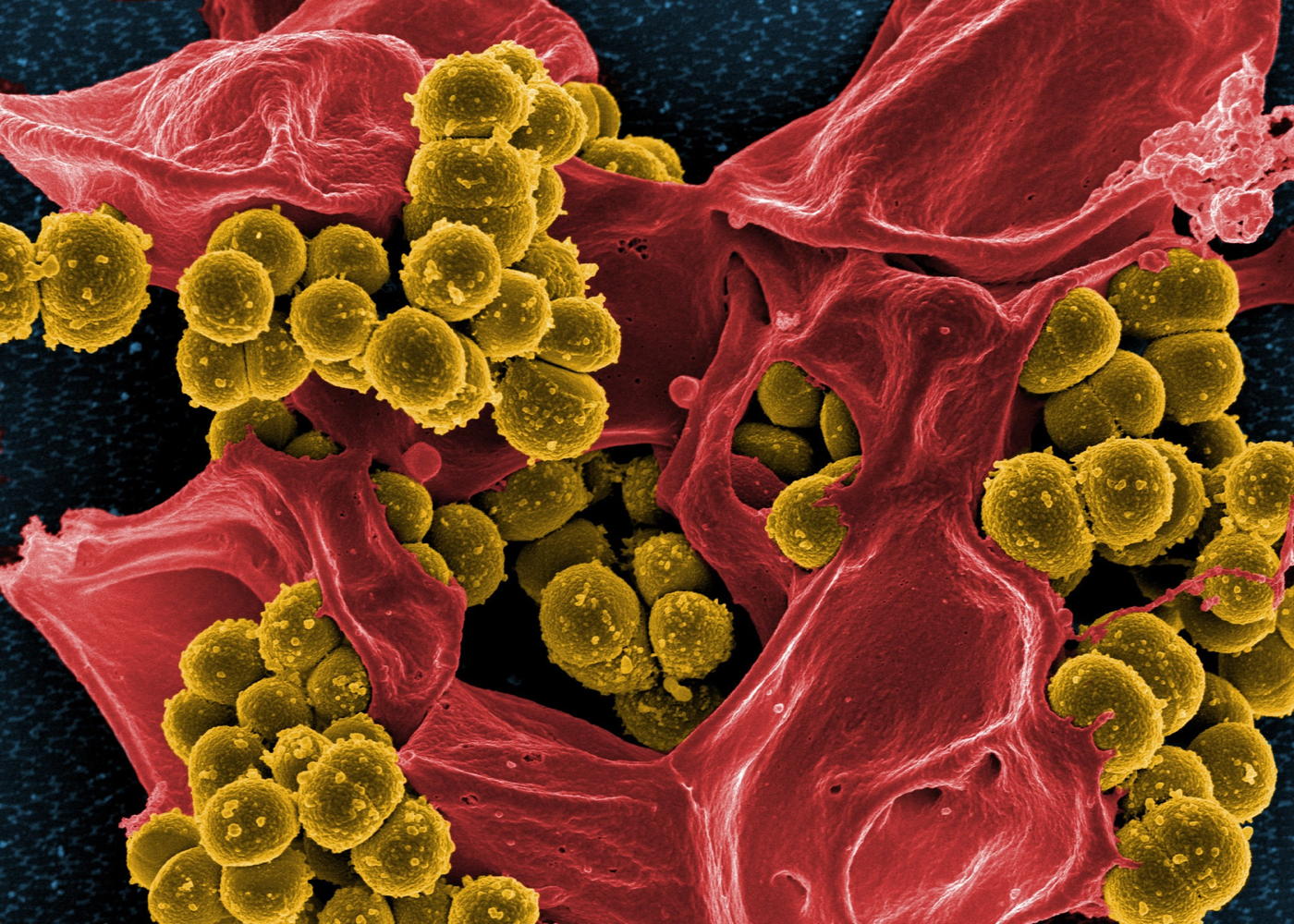
An antibiotic-resistant staph bacteria, from the already-existing (and probably valid) scare campaign against the overuse of antibiotics.
I saw a very strange and telling rant by a friend on the left about a year ago, comparing COVID vaccines to antibiotics. There are a lot of very clueless things on the internet not worth commenting on because they’re little more than gibberish, and I kept putting this post off because separating the gibberish from the interesting parts was painful.1
But his rant about antibiotics highlights three very important facets of how the left works, how they treat science, politics, and the new hate.
My friend’s post suggests that we need to start a campaign to make those hesitant to take the COVID vaccine also hesitate to take antibiotics.
I’m all about aiming an anti-antibiotic campaign tailored straight for the anti-vaxers. Use their words, make them imagine themselves heroes set upon in an egregious age, and let them die of a routine infection. Not so much murder as assisted suicide, and for the greater good.
He wants the unvaccinated to die. The arguments that he suggests would make the COVID vaccine hesitant also stop taking antibiotics include:
It’s right there in the name! And that’s only ONE of the reasons people should avoid antibiotics:
2. You need to be careful what you put in your body.
7. People give cows antibiotics, and just look at them. Fuckin’ herd animals.
The most obviously fascinating aspect of his plan is that I’ve seen all of these arguments before. These points are already used by the medical community. He doesn’t seem cognizant of the already-existing campaign against the use of antibiotics by doctors and health professionals. Do a search on “antibiotic overuse” and you’ll find just what he’s suggesting—but against everyone, not just those hesitant to take the COVID vaccine. That is, many in the medical community already think we are abusing antibiotics.
- January 26, 2022: It’s a mad, mad, mad, psychotic world
-
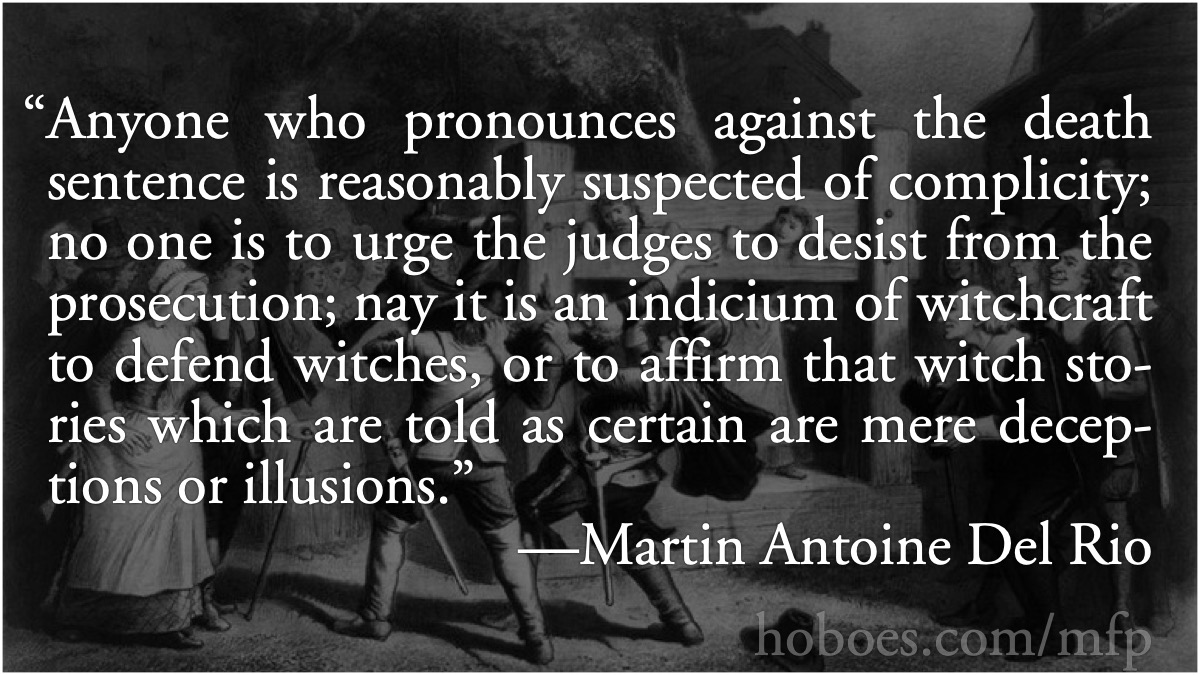
Tomorrow is Blog About Mass Formation Psychosis day. I blog on Wednesday so mine’s coming early. In fact, I had a very important post scheduled for today but I’ve pushed it off because this is a fascinating time to live through. Long ago I did a lot of personal research on the witch crazes of the 14th through the 16th centuries, and what we’re living through now looks a lot like the rise of the burning years.
Obviously it would be a lot less fascinating and more stressful if my livelihood depended on people who bought into our latest witch craze. If yours does, you have my sympathy.
Every once in a while there’s a theory about how some kind of hallucinogen in rye or other foodstuffs causes people to see things that could be mistaken for witchcraft. The witch-burners, according to this theory, were just victims of rye ergot or some other hallucinogen. Sometimes, the theory even goes so far as to say that the witches themselves were relating experiences they had hallucinated. It wasn’t the torture that explained their confessions, they truly believed they were witches. This whitewashes the evil done by those who bought into the craze. It denies the well-established ability of humans to panic and respond completely inappropriately to difficult-to-understand—sometimes even manufactured—crises.
In another hundred years, we’ll probably hear about how rye ergot induces hallucinations of the angel of death, and that this explains the vaccination passports, the concentration camps, and the mass firings of critically-needed medical workers.
Psychosis doesn’t mean that what triggered the unhealthy response isn’t real. World War II was real. But it was insanity for FDR’s administration to put Americans into camps as a response to the bombing of Pearl Harbor. It was insanity for the Supreme Court to allow it. And it was insanity for Roosevelt to conspire with Republicans to deliberately sideline Republican politicians like Governor Carr of Colorado who questioned the insanity.1
- October 21, 2020: COVID Lessons: How can we respond to a disease before it spreads?
-

There’s a reason bureaucrats prolong crises.
One of the biggest problems with our disease response plans is that they are responses. We can only implement them after we know about the disease. Once we know about the disease, the disease is already spreading. And that results in panicked and illogical responses that themselves kill people. Every action is a tradeoff between lives here and lives there. Expanding our flawed COVID-19 responses forever, even if they worked, would kill people for no purpose.
There are other options, however, and options that make life better even absent an epidemic. Much of the reason for diseases spreading rapidly is that so many of our government institutions are designed around turn-of-the-century theories about human resource management. They’re about herding people en masse into huge crowds at central locations.
So, we send all of our children to a massive central location every weekday during flu season; and our cities, the civil locations most vulnerable to epidemic spread, rely heavily on centralized mass transit systems to transport people throughout the city according to the needs of the system rather than the needs of the people. Everything is on a schedule to ensure huge crowds of people massing together at the specific, limited times when the train, metaphorical or literal, leaves the station.
We need to drastically decentralize these institutions. We’ve long known that monocultures among plants and animals invite deadly disease. We need to encourage pluralism over monolithic government programs.
Parents should have choices about where to send their children based on the needs and vulnerabilities of their own children rather than based on the needs of the system. Parents should be able to choose their own ratio of risk to reward. Further, parents should be able to switch rapidly between their choices, even the choice of keeping their children home, and still utilize the public education resources their tax dollars purchase.
As I write this, the evidence appears to be that COVID-19 doesn’t spread rapidly through children. But we can’t count on that for future diseases. Further, choice in education will provide a better education for every child, because their education will be specific to them. The action of choosing an education for their children will provide parents with more incentive to invest in their children’s educations.
The most important benefit of educational pluralism is better education. Drastically slowing the spread of diseases through children is, however, a very important and socially useful extra credit.
Education will be better before an epidemic, and safer during one.
- October 7, 2020: COVID Lessons: Journalistic Delusions and the Madness of Politicians
-
In 1979, Canada was blessed with a total solar eclipse. As astrophiles in the Great White North prepared for totality, public officials in Manitoba panicked. Children, they worried, might go blind if, enthralled by their first solar eclipse, they gazed too long at the sun. The Winnipeg Health Department wrote the Manitoba Medical Association for advice, and received this response:
The Section of Ophthalmology of the Manitoba Medical Association strongly advises that the only safe method of viewing the sun, especially in eclipse, is to watch it on television. No other means is completely reliable… Nothing short of 100 percent foolproof protection is called for when the stakes are as high as permanent loss of vision. Again, the M.M.A. Section of Ophthalmology advises that the eclipse of the sun should only be viewed on television. This position is also endorsed by the Canadian Ophthalmological Society.
Emphasis mine; their response was, of course, a bureaucratic response and not an educational one balancing between risk and a rare-in-a-lifetime opportunity. In a sense their initial conclusion wasn’t their fault: they were asked for a medical opinion. They were not asked, nor where they qualified to comment on, the educational benefits of an eclipse, or the justifiable excitement of glimpsing a rare astronomical event. On the other hand, their conclusion—“the eclipse should only be viewed on television”—goes well beyond a medical opinion and into policy.
The schools decided that extreme measures were necessary to keep children from experiencing their first eclipse:
(1) …care must be taken to have all students indoors before the eclipse begins; (2) arrangements will have to be made to keep students in school until about 12:05 P.M.; (3) blinds and/or drapes will have to be lowered or drawn over windows facing the sun to prevent accidental exposure during the eclipse; (4) all staff have the responsibility of doing their utmost to protect students at school from possible injury, according to the advice given to us by the City of Winnipeg Health Department and the Manitoba Medical Association.
But what if there’s an emergency other than a killer eclipse, such as a fire?
When the alarm sounds the classes will remain in their locations or rooms and await further instructions.
- September 23, 2020: COVID Lessons: Don’t trust socialists
-
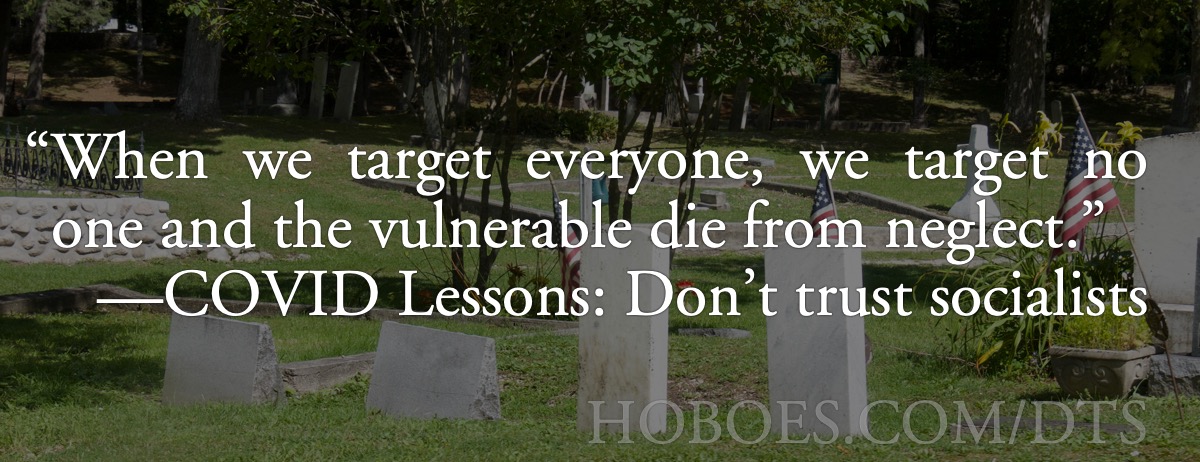
In 1979, in an Omni interview, G. Harry Stine complained about the media’s war against the space program.
“The gloom resulted from a media disenchantment with space that began the instant Neil Armstrong first set foot on the lunar surface. It all went off without a hitch. If anything really bothers the news media, it is a complex and dangerous operation that comes off precisely as planned right down to the fraction of a second.” gloom-media
The media wanted America to fail. What Stine failed to take into account is that, like Britain’s IRA, the media can fail every time but one and that one time they succeed will successfully kill progress. Progress has to be right every time. And so the media frenzy after the Columbia disaster shut down the shuttle and all manned exploration for the then-foreseeable future.1
A major reason for our dangerously flawed response to this crisis is that we trusted the wrong people. We forgot the most basic lesson of the last hundred years of gloom: we can’t trust self-styled media experts. We forgot that we can’t trust end-of-the-world scare stories from the same old crisifiers.
China lied. The World Health Organization spread China’s lies. They lied for the same reason that the VA lied, that the CDC lied. It is the nature of monopolistic bureaucracies, that face no consequences for their actions, to lie. Trusting such institutions is deadly, as we learned during the last several months.
Over and over, we forgot the most basic lesson of international science: we cannot trust communist dictatorships. Nor can we trust those media outlets and international organizations that do trust communist dictatorships. Probably the number one reason COVID-19 became a crisis is that the World Health Organization spread the Chinese government’s lies when the Chinese government said the virus wasn’t communicable.
We often focus on the obviously nutty things the United Nations does, such as put Iran in charge of the Conference on Disarmament, Cuba on the Human Rights Council, and, again, Iran on the Commission on the Status of Women.
But the UN’s corruption goes a lot deeper. By design, the United Nations trusts their member countries, whether the member country is a democracy or a dictatorship. This very clearly kills people in democracies, because dictatorships lie without regard for loss of life, as China did while the Wuhan virus spread. The data was there. Taiwan saw it, but the WHO doesn’t recognize Taiwan.
- September 9, 2020: COVID Lessons: Government Monopolies are Still Monopolies
-
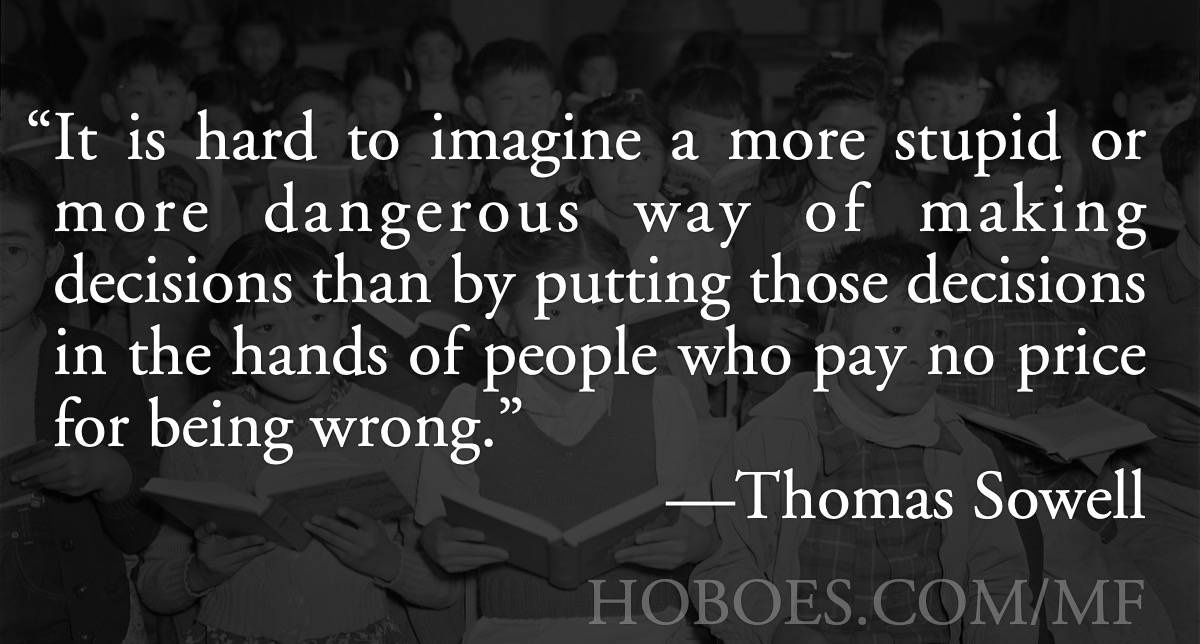
Our health care response to COVID-19 destroyed our ability to manage the co-morbidities that made it dangerous, killing the people we should have been focusing our response on. Further, it destroyed our ability to handle any other crises that might come up, individual or mass.
Our stay-at-home orders destroyed our ability to come up with innovative solutions to social distancing.
Our ability to provide critical supplies where they were needed most? We shut that down, too.
We need to be more comfortable with, and encouraging of, paying employees more to show up for work in emergencies. We need to be open to paying employees and businesses more for delivering to areas where supplies are short, and for taking other extra steps to ensure that needs are met in an emergency. Instead, we lumped rerouting supply routes together with hoarding and price gouging. With the result that on the one hand grocery stores limited how much of items like milk we could buy, and on the other, restaurant suppliers dumped their excess.
We would not have had all of the shortages we had if businesses had been allowed to charge enough so that their employees could meet those demands quickly.
We called every price increase gouging, which meant that we couldn’t get supplies where they needed to be. It costs money to run overtime to make more toilet paper, more flour and yeast. It costs money to repackage restaurant milk for consumer use. It costs money to hire more transportation workers on short notice to get those supplies to where they’re needed. It costs money to hire more front-line workers to handle higher demand. All of that means higher prices until the new supply routes become regular routes. When we forbid paying employees more during an emergency or hiring more employees to meet new, emergency needs, we’re ensuring that those needs are not met.
- August 19, 2020: COVID Lessons: Shutting down innovation
-
The same pattern of neutering our health care response spread throughout everything else that was shut down, too. Which meant that, instead of being open to innovative ideas for staying open and providing services, states clamped down on organizations and businesses that successfully implemented physical distancing while still providing services.
There is simply no reason to ticket churchgoers, for example, who designed a drive-in service where everyone stayed in their own car. Or restaurants who were able to successfully serve customers while maintaining distancing. We saw the White House Press Corps every day successfully physical distancing while questioning the President. There was no reason to deny this to everyone except the press.
If people can figure out how to go to church while maintaining separation, that’s a great innovation that needs to spread to other organizations, not something deserving of massive fines. If teenagers can figure out how to hold a safe senior get-together to make up for the loss of their graduation events, again, that’s not something to be destroyed, it’s something to be celebrated. So many politicians seemed to think that if you were social while physically separated, you were defying their authority.
We should have learned from these innovations. We should not have slapped fines on the very ideas we needed most, or punished those who came up with those ideas.
Both prescriptive and performance mandates block progress. Prescriptive mandates block innovative ways to solve a problem, and performance mandates block innovative ways to go around a problem. Our response to any crisis must allow both getting through the crisis and going around the crisis.
COVID-19
- Covid-19 cases may be undercounted by 50-fold in LA County, antibody surveys show: Tim McDonnell
- “The results of their blood tests, conducted on April 10 and 11, show that between 2.8% and 5.6% of the participants had antibodies to the virus. Accounting for a margin of error, that suggests 221,000 to 442,000 people in the county may have been infected—28 to 55 times higher than the county’s official count of confirmed cases… Barbara Ferrer, director of the LA County Department of Public Health, said that based on the survey’s prevalence estimate, the county’s mortality rate is between 0.1 and 0.2%, rather than above 4% as reflected by the official caseload.”
- Large-scale Santa Clara antibody test suggests COVID-19 cases are underreported by factor of 50-85: Eric Ting
- “Large-scale antibody tests are expected to give researchers an idea of just how widespread the outbreak is, and preliminary results from the first such test in Santa Clara County suggest we are underreporting cases by at least a factor of 50.”
nursing homes
- 3 Out of 5 Deadliest Coronavirus Outbreaks Were in State Nursing Homes: Daniel Greenfield
- “The 5 deadliest outbreaks in nursing homes took place in New York, New Jersey, and Massachusetts. Three of those facilities, the Soldiers' Home in Holyoke, Massachusetts, the Paramus Veterans Memorial Home, and Veterans Memorial Home in Menlo Park in New Jersey, are state run facilities.”
- Bring Grandma-Killing Governors to Justice: Daniel Greenfield at Sultan Knish
- “Whitmer, Cuomo, Wolf, and Newsom have been widely praised by the media, even though their disastrous policies likely led to the deaths of thousands of senior citizens in nursing homes. There were states that got it right, protecting senior citizens by barring the transfer of coronavirus patients to nursing homes, requiring negative tests before a transfer, and creating separate facilities.”
- LeDuff: Whitmer's Covid Science For Michigan Nursing Homes Is A Bunch Of Stale Air: Charlie LeDuff
- “Michigan is now one of the last—if not the last—states to allow the comingling of patients in nursing homes, says Sen. Pete Lucido, who is pushing a bill through the legislature to ban the practice.”
- Michigan lawmakers demand Whitmer stop placing COVID-19 patients in nursing homes with healthy residents: Rod Meloni and Derick Hutchinson
- “Controversial positive puts coronavirus patients in nursing homes with health people… States such as New York have already reversed their similar policies, and lawmakers want to know why Michigan hasn’t done so.”
- Nursing home residents account for 34% of Michigan’s COVID-19-related deaths: Elisha Anderson, Kristi Tanner, and Gina Kaufman
- “There have been 1,947 deaths of nursing home residents with COVID-19 statewide and 20 deaths of staffers, the state reported Monday, as it released data on deaths associated with individual nursing homes for the first time since the pandemic began three months ago.”
- U.S. Nursing Homes Profiled in A New Report
- “Of the 17,000 nursing homes in the United States, 67 percent are proprietary, just over a quarter are voluntary nonprofit, and the government operates about 7 percent of the homes.”
- Where Does Ron DeSantis Go to Get His Apology?: Rich Lowry at National Review Online
- “I think a lot of the policymakers in the U.S. acted like Italy would happen in the United States, but when you look under the hood of Italy, there were huge differences, and there were reasons why that part of Italy fared as poorly as it did. I think the median age of fatality was something like 82 in some of those areas in Northern Italy. So we looked at that, but that really helped inform the strategy to focus most of our efforts on the at-risk groups.” (Hat tip to Ace at Ace of Spades HQ)
unseen death toll
- Bernie Sanders’ Foul Socialist Odor: Michelle Malkin at Real Clear Politics
- “Socialist genius Bernie Sanders has figured out what’s really ailing America. Our store shelves have too many different brands of deodorant and sneakers.”
- California Docs Say Lockdown vs. Non-Lockdown ‘Did Not Produce a Statistically Different Number of Deaths’: Stacey Lennox at PJ Media
- “In the opinion of both doctors, the current guidelines are not based on rational thinking.”
- Healthcare Charlie Foxtrot: Scarlett Doc at According To Hoyt
- “Much like the rest of society, the healthcare system has been modified to shift emphasis to essential services, while limiting services deemed nonessential. Many outpatient offices have closed or switched to tele-health visits exclusively, lab and imaging centers have stopped taking non-urgent appointments, and non-emergent surgeries have been cancelled or postponed. As a healthcare worker whose social circle is dominated by other healthcare workers I have been privy to the impacts of these changes on a variety of patients, and the potential downstream effects are concerning.”
- My patients suffered because of Michigan Gov. Gretchen Whitmer’s illegal lockdown: Jordan Warnsholz at USA Today
- “One of my patients came to see me when he felt like he had nowhere else to turn. The governor’s orders prevented him from getting regular treatment for his diabetes. By the time he came to me, he was in a full-on medical emergency. He told me about an odor coming from his foot—it turned out to be gangrene. His kidneys were in full-blown failure. We rushed him to the nearest hospital, but it was too late. His foot had to be amputated. And then, just days later, he died from complications.”
- Types of Surgery at Johns Hopkins Medicine
- “As part of your diagnosis, you and your doctor may discuss surgery as a way to correct your condition.”
- The unseen death toll of Covid-19 measures: Tom McClintock
- “Over the last four years, 2.47 million Americans had been lifted out of [poverty], meaning 7,700 fewer poverty-related deaths each year. It’s a good bet these gains have been completely wiped out, and it’s anyone’s guess how many tens of millions of Americans will have been pushed below the poverty line as governments destroy their livelihoods. It’s also a good bet the resulting deaths won’t get the same attention.”
- ‘Senseless’ Elective Surgery Lockdown May Put Hillsdale Hospital Under: Madeline Peltzer at Mackinac Center for Public Policy
- “Testing, x-rays, blood draws, operating room, staff: ‘We lose everything’.”
- “Mass casualty incident”: 600 doctors sign letter to Trump calling for end to lockdowns over health concerns: Adam Ford
- “Millions of Americans are already at triage level red. These include 150,000 Americans per month who would have had a new cancer detected through routine screening that hasn't happened, millions who have missed routine dental care to fix problems strongly linked to heart disease/death, and preventable cases of stroke, heart attack, and child abuse. Suicide hotline phone calls have increased 600%.”
More COVID-19
- A disappointing COVID Summer of Death
- When the COVID summer of death failed to materialize, it challenged the religious faith of mask and vaccine fanatics.
- President Biden’s most anti-vax policy
- President Biden’s decision to magnify personal decisions within the medical community about the risks of the COVID vaccines signals that he’s either anti-vaccination or incredibly incompetent. Or both.
- It’s a mad, mad, mad, psychotic world
- It was once a sign of witchcraft to deny that witches exist. Today, it is a sign of madness to point out the madness of our COVID dogma.
- How to overcome vaccine hesitancy
- We need to take a lesson from Mark Twain. The best way to reinforce vaccine hesitancy is to force vaccinations. The best way to overcome vaccine hesitancy is to act as if vaccination is desirable.
- Gain-of-bureaucracy disease
- Bureaucracies do not admit they’re wrong; scientists are always trying to prove they’re wrong. Government funding is diametrically opposed to the advancement of science.
- Eight more pages with the topic COVID-19, and other related pages
More extraordinary delusions
- The Modern Lobotomy: Whitewashing Child Mutilation
- Child mutilation in the service of gender quackery is something that future generations will look back on in horror, much as we today look back on the lobotomy.
- It’s a mad, mad, mad, psychotic world
- It was once a sign of witchcraft to deny that witches exist. Today, it is a sign of madness to point out the madness of our COVID dogma.
- COVID Lessons: Journalistic Delusions and the Madness of Politicians
- COVID-19 was real. The crisis surrounding it was entirely manufactured. Everything we did took a manageable disease and turned it into a killer. And the very worst was believing a media we knew was lying.
More health care
- Community health acts to improve Obamacare
- Democrats now want to talk about how to improve Obamacare. Here’s how to do it.
- Why government-funded cancer research is dangerously unlike the Manhattan Project
- A “Manhattan Project” for cancer is likely to delay cancer cures, and make what cancer cures we find more expensive—like the Epipen. And kill people, like the original Manhattan Project.
- Why does the EpiPen cost so much?
- With Mylan raising the cost of the EpiPen even as the EpiPen enters the public domain, people are complaining—but they’re complaining in ways that will raise health costs even more.
- Strangling the iPhone of health care
- We have no idea what great improvements in health care we have strangled through our current system of government regulations, subsidies, and tax incentives.
- Catastrophic Care: How American Health Care Killed My Father
- David Goldhill, inspired by the unnecessary death of his father in a hospital surrounded by great doctors, nurses, and technology, describes in detail why health care today kills people—and then charges for it. In no other industry could a business fail so miserably, and then send a bill for having failed. He also argues persuasively that the ACA took all the bad parts of our health care system—and made them worse.
- 17 more pages with the topic health care, and other related pages
More Lessons from COVID-19
- COVID Lessons: Shutting down innovation
- Our response to COVID-19 was almost entirely to make the problem worse. We shut down everything that could help, and when people started thinking up ways to neutralize the virus’s spread, we shut them down, too. We actually fined people for innovating means of continuing to work safely; and of course we told everyone to shut down but still pay your taxes.
- COVID Lessons: Government Monopolies are Still Monopolies
- Our response to COVID-19 was almost designed to make it worse. We shut down the nimble small businesses that could respond quickly, and relied almost solely on large corporations and the government monopolies that failed us, because they are monopolies.
- COVID Lessons: Don’t trust socialists
- Our response made the virus worse. We trusted self-styled experts, failed models, socialists, and the media over what we could see with our own eyes.
- COVID Lessons: Journalistic Delusions and the Madness of Politicians
- COVID-19 was real. The crisis surrounding it was entirely manufactured. Everything we did took a manageable disease and turned it into a killer. And the very worst was believing a media we knew was lying.
- COVID Lessons: How can we respond to a disease before it spreads?
- How can we make ourselves less vulnerable to sudden epidemics, before they become epidemics, and without causing epidemic levels of deaths?

